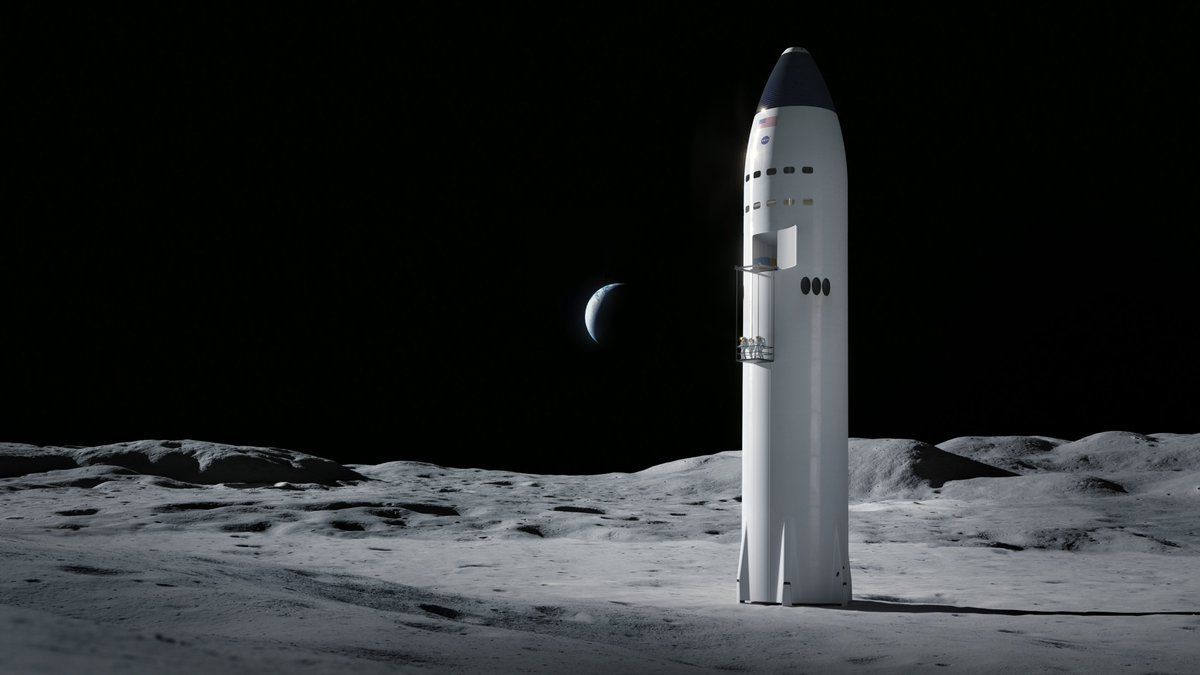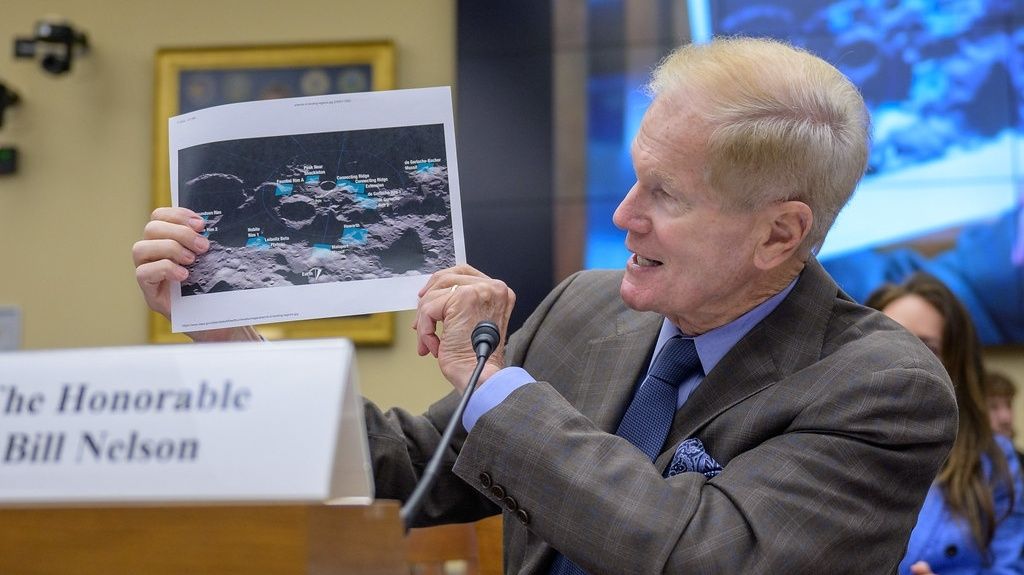The call from the moon is clear – try and find my water ice.
There is the prospect that oodles of water ice could be lurking in the bottom of south polar craters on the moon.
Forgive the cosmic colloquialism but these super-chilly features – “where the sun don’t shine” – are tagged as permanently shadowed regions or PSRs. These south pole cold traps, if indeed laden with tons of water ice, are ideal for renovating that resource into drinkable water, oxygen, even rocket fuel.
It has been projected that a total of between two tons and 60 tons of surface water was charted by NASA’s Lunar Reconnaissance Orbiter Lyman Alpha Mapping Project, tempting tonnage right there on the floors of the larger permanently shadowed south polar craters. LAMP’s main mission is to find water ice in deep polar craters.
But new research flags a concern.
Fouling the goods
Could human landing systems touching down on the moon deliver water from their rocket exhaust plumes, thereby fouling that locked-up, au naturel nectar?
A newly published research paper – “Possible Anthropogenic Contributions to the LAMP-observed Surficial Icy Regolith within Lunar Polar Craters: A Comparison of Apollo and Starship Landings” – takes a look at such consequences.
Published in The Planetary Science Journal, this study is led by Bill Farrell, a senior research scientist in Columbia, Maryland for the Space Science Institute.

Native water
As pointed out in the research, the SpaceX Starship, picked by NASA to plop down Artemis moonwalkers on the lunar surface, could be rocket ruckus as far as native water ice is concerned.
The Starship landing plume, the paper notes, has the potential, in some cases, to deliver over 10 tons of water to the PSRs.
“This anthropogenic contribution could possibly overlay and mix with the naturally occurring icy regolith at the uppermost surface,” the report states. “A possible consequence is that the origin of the intrinsic surficial icy regolith, which is still undetermined, could be lost as it mixes with the extrinsic anthropogenic contribution.”
Apollo landings
The research paper also looked at past human activity, such as the Apollo lunar module landings. Could those exhaust plumes from the historic touchdowns churn out some or all of the surficial PSR water now being observed by the LAMP onboard the Lunar Reconnaissance Orbiter?
The answer is no, the research team found. Those Apollo landings provided only a very small, less than 1% of the surface water in PSRs. That’s an inconsequential fraction of water to the intrinsic PSR surficial water, they report.
“However, Starship landings in the south polar region have the potential to add a substantial contribution of water to the PSRs, possibly exceeding the mass of the existing surface frost in the PSRs over as few as four landings,” the paper observes.

An output is that naturally occurring water veneer in PSRs is expected to be altered (obscured/mixed) by Starship landings. “This additional anthropogenic water mass deposited onto the surface of the PSRs could reduce or destroy the ability to understand the origin of the intrinsic, naturally occurring surface icy regolith,” suggest the scientists.
Exospheric modeling
Farrell told Space.com that he and colleagues determined the amount of water deposited into the high-latitude polar region from the landing plumes of 20th century Apollo landings and Starship touchdowns of the 21st century.
Used for the research was exospheric modeling work done by Parvathy Prem, a planetary scientist at the Johns Hopkins Applied Physics Laboratory in Laurel, Maryland. It was used to find out the amount of this surface water that outgasses and migrates into the polar cold traps.
“It turns out that about 20% of the high latitude water deposit finds its way into the permanently shadowed craters in the south pole,” Farrell said.
Distinctly different sources?
Interestingly, there’s a bit of a mystery involving the Lunar Reconnaissance Orbiter’s LAMP output.
“To date, investigators simply don’t know the origin of this LAMP-observed top-surface icy-regolith in the cold traps,” Farrell explained. It may be a manifestation of the deeper ice that has been sensed by the neutron spectrometers on NASA’s Lunar Prospector orbiter and the LRO.
However, it may also be from one or more distinctly different sources, Farrell added, possibly from active, ongoing sources like solar wind-created water migration or water delivery from micro-meteoroids.
“With a big lander delivering 10’s of tons of water to the cold traps, investigators may lose the ability to uniquely determine the source of this top-surface ice,” Farrell said. “The opportunity will be lost.”
Inspect the effect
Farrell and colleagues suggest that existing and future orbital and landed assets be used to inspect the effect of polar landers on the cold traps within PSRs.
One suggestion is to have assets currently in orbit scrutinize the south polar PSRs both before and after Starship polar landings. That collected data could determine the effect of the rocket’s landing on the natural, intrinsic surface icy regolith.
Prior to the first Artemis human landing (now scripted as Artemis 3), Starship would make a demonstration landing, and the effects of this landing on the PSRs could be monitored by moon-circling assets.

Ground truth
As for a “ground truth” look, NASA’s still to fly Volatiles Investigating Polar Exploration Rover (VIPER) could possibly snoop around to examine the delivery of water by Starship.
VIPER and its array of instruments should be on-duty, pre-Starship touchdown. VIPER could provide a first-ever, on-the-spot PSR “trapping ratio” using the local Starship-released engine chemistry at landing as a known source, the paper states.
The paper “Possible Anthropogenic Contributions to the LAMP-observed Surficial Icy Regolith within Lunar Polar Craters: A Comparison of Apollo and Starship Landings,” can be found here.


